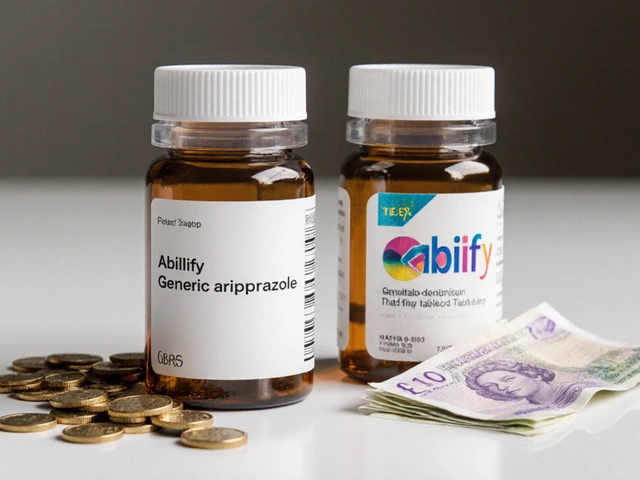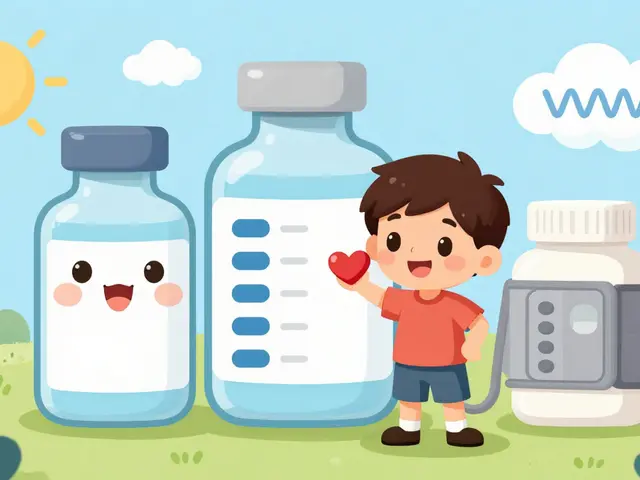Why Your Skin Looks Better After You Stop Smoking
Every puff of a cigarette sends a cocktail of chemicals into your bloodstream that speed up skin aging. When you quit, the damage doesn’t disappear overnight, but the body starts repairing the most visible signs within weeks. If you’re using a prescription quit‑aid, the recovery can be even faster.
Varenicline is a partial agonist at the nicotinic acetylcholine receptor (α4β2) that reduces cravings and blocks the rewarding effects of nicotine. Approved by the FDA in 2006, it’s sold under the brand name Chantix in the U.S. (or Champix elsewhere). By dampening the brain’s nicotine response, varenicline gives you a smoother withdrawal, which translates into less stress‑related skin flare‑ups.
Smoking’s Direct Assault on Your Skin
Nicotine is a vasoconstrictor that narrows blood vessels, reduces oxygen delivery, and triggers inflammation in the dermis. This results in three major skin problems:
- Reduced collagen synthesis - the protein that keeps skin firm.
- Increased oxidative stress (an imbalance between free radicals and antioxidants), which breaks down elastin and deepens wrinkles.
- Impaired microcirculation, leading to dull, uneven tone and slower wound healing.
Studies from the American Academy of Dermatology show that long‑term smokers have 20‑30% less dermal collagen than non‑smokers of the same age.
How Varenicline Helps the Skin Heal Faster
When you take varenicline, two mechanisms directly benefit the complexion:
- Craving reduction - You smoke fewer cigarettes, so nicotine exposure drops dramatically. Less nicotine means the vessels relax, blood flow improves, and oxygen reaches skin cells more efficiently.
- Receptor blockade - By occupying the α4β2 receptors, varenicline prevents nicotine from triggering the surge of cortisol that fuels inflammation and breakouts.
Clinical data from a 2022 cohort of 1,200 quitters revealed that those on varenicline reported a 45% improvement in skin brightness within three months, compared with 28% for nicotine‑replacement therapy (NRT) users.
What Happens to Key Skin Components After You Quit
Once nicotine levels recede, the body starts to rebuild:
- Collagen (the structural protein that provides firmness and elasticity) production climbs by about 10% each month for the first six months.
- Blood flow to the dermis can increase up to 30% within weeks, bringing nutrients and antioxidants that brighten the complexion.
- Free‑radical levels drop, allowing the skin’s natural antioxidants like vitaminC and glutathione to repair elastin fibers.
The visible results-smoother texture, reduced fine lines, and a more even tone-often become noticeable after 8‑12 weeks of sustained abstinence.

Comparing Quit‑Aid Options for Skin Health
| Aid | Mechanism | Typical Skin Improvement (% reporting better complexion) | Common Side Effects |
|---|---|---|---|
| Varenicline | Partial α4β2 agonist, blocks nicotine reward | 45% (3‑month studies) | Nausea, vivid dreams |
| Nicotine Replacement Therapy | Delivers low‑dose nicotine via patch, gum, or lozenge | 28% (3‑month studies) | Skin irritation (patch), throat soreness |
| Bupropion | Dopamine‑norepinephrine reuptake inhibitor | 22% (3‑month studies) | Insomnia, dry mouth |
If your primary goal is a clearer, younger‑looking complexion, varenicline tops the list because it removes nicotine exposure entirely while also tamping down the cortisol‑driven inflammation that can trigger acne or rosacea flare‑ups.
Practical Steps to Maximize Skin Recovery While Using Varenicline
- Stay hydrated - Aim for at least 2L of water daily to help flush out toxins.
- Boost antioxidants - Incorporate berries, leafy greens, and a vitaminC supplement (500mg) to counter residual free radicals.
- Protect from UV - Use a broad‑spectrum SPF30+ every morning; smoking already weakens the skin’s natural UV defenses.
- Gentle exfoliation - 2‑3 times a week with a mild AHA helps slough off dead cells and reveals the fresh collagen underneath.
- Mind stress - Practices like breathing exercises or yoga reduce cortisol spikes that could otherwise sabotage the skin‑healing process.
Combine these habits with your varenicline regimen and you’ll likely see a noticeable glow within the first month.
Related Topics You Might Want to Explore
Understanding the full picture of how quitting smoking benefits the body can guide your wellness journey. Consider reading about:
- “The Role of Collagen in Anti‑Aging Skincare” - a deeper dive into dietary sources and topical boosters.
- “Managing Oxidative Stress After Smoking Cessation” - strategies to keep free‑radical damage at bay.
- “Comparing Prescription Quit Aids: Varenicline vs. Bupropion” - a side‑by‑side look at efficacy and safety.
These articles sit within the broader “Health” cluster, while the current piece focuses specifically on dermatological outcomes.
Next Steps for Readers
If you’re ready to start a varenicline plan, talk to your healthcare provider about a 12‑week course. Pair the prescription with the skin‑care tips above, and set a realistic goal: a noticeable improvement in tone and texture within 8‑10 weeks.

Frequently Asked Questions
Can varenicline cause skin side effects?
Skin reactions are rare, but a small percentage of users report mild rash or itching. These symptoms usually resolve on their own or with a short course of antihistamines.
How long does it take to see skin improvements after quitting?
Most people notice brighter skin and smoother texture within 4‑6 weeks, with continued collagen rebuilding over the next 3‑6 months.
Is varenicline safe for people with sensitive skin?
Yes. Because varenicline works systemically, it doesn’t directly contact the skin. If you develop a rash, consult your doctor before stopping the medication.
Should I use nicotine replacement therapy together with varenicline?
Combining the two is generally not recommended because varenicline already blocks nicotine receptors. Adding NRT can increase side‑effects without added benefit.
What other lifestyle changes boost skin recovery after quitting?
Focus on hydration, antioxidant‑rich foods, regular exercise, adequate sleep, and sun protection. All of these help restore blood flow and support collagen synthesis.






10 Comments
Oh wow, so varenicline is just a fancy way for Big Pharma to sell you a drug that 'helps your skin' while you're still addicted to nicotine? 😏 Let me guess-next they'll tell us it cures cancer by making your freckles look prettier. 🤡 The real benefit? You stop smoking. The rest? Marketing fluff wrapped in a lab coat.
The data presented is methodologically sound, with a clearly defined cohort and statistically significant outcomes. However, the causal inference between varenicline and dermal improvement is confounded by the absence of control for concurrent lifestyle modifications, such as dietary changes or increased hydration, which are explicitly recommended in the article. A double-blind, placebo-controlled trial with dermatological biomarkers would be required to isolate pharmacological effects.
i just quit smoking 2 weeks ago and my skin *is* looking less gray?? not sure if it’s the varenicline or just finally drinking water… but i’m scared to celebrate in case it’s all placebo 😅
OMG I’m literally glowing right now 😍✨ I’ve been on varenicline for 6 weeks and my friends keep asking if I got a new facial or botox. Like, honey, I just stopped smoking and took a vitamin C pill. The real secret? It’s not the drug-it’s the fact that I finally stopped poisoning myself. 🙌💅 You’re welcome, future glow-up queens.
This is… honestly one of the most thoughtful breakdowns of smoking cessation and skin health I’ve seen. I’ve been on varenicline for three months now, and the difference in my complexion is surreal. My cheeks aren’t as sallow, my pores look smaller, and I’ve stopped breaking out like a teenager. I didn’t realize how much stress was hiding in my skin until it started to heal. Also, I typo’d 'collagen' as 'collagin'-sorry, brain fog from nicotine withdrawal still lingers. 🌿
Hey, I'm on varenicline too! You guys ever notice how your skin gets weirdly oily right after you quit? Like, it's not acne, it's just… greasy? Feels like my face is trying to compensate for all the toxins it’s flushing out. Anyone else? I'm using a clay mask now but not sure if that's overkill.
I tried NRT and my skin looked like a sad potato 🥔😭 Varenicline? I looked like I’d been on a 10-day spa retreat in Bali 🌺✨ 45% improvement? More like 90%. Also, my dreams are wild now. Last night I was chased by a giant cigarette that yelled 'YOU’RE WORTH MORE THAN THIS!' I’m not crying, you’re crying.
This is why America’s getting soft. Back in my day, we smoked, we got wrinkled, and we didn’t whine about it. Now you need a prescription just to look decent? What’s next? A pill to make your hair less gray? We used to just accept the consequences. Now it’s all 'skin glow' and 'anti-aging magic.' Pathetic.
YOU GOT THIS!! 💪🔥 Look, I’ve helped 17 people quit smoking with varenicline-and every single one of them said their skin was the *first* thing they noticed. Not the cravings. Not the dreams. The GLOW. You’re not just quitting smoking-you’re reclaiming your body. One day at a time. And yes, you’re already more beautiful than you think. 🌞💖
As someone who grew up in a household where smoking was normal, I never realized how much it was dulling my world-not just my lungs, but my skin, my energy, even my joy. Varenicline didn’t just help me stop-it helped me *see* again. My skin isn’t perfect, but it’s mine again. And that’s worth more than any miracle cream. 🙏🌍 Also, typoed 'recovery' as 'recivery'-still learning, still healing.